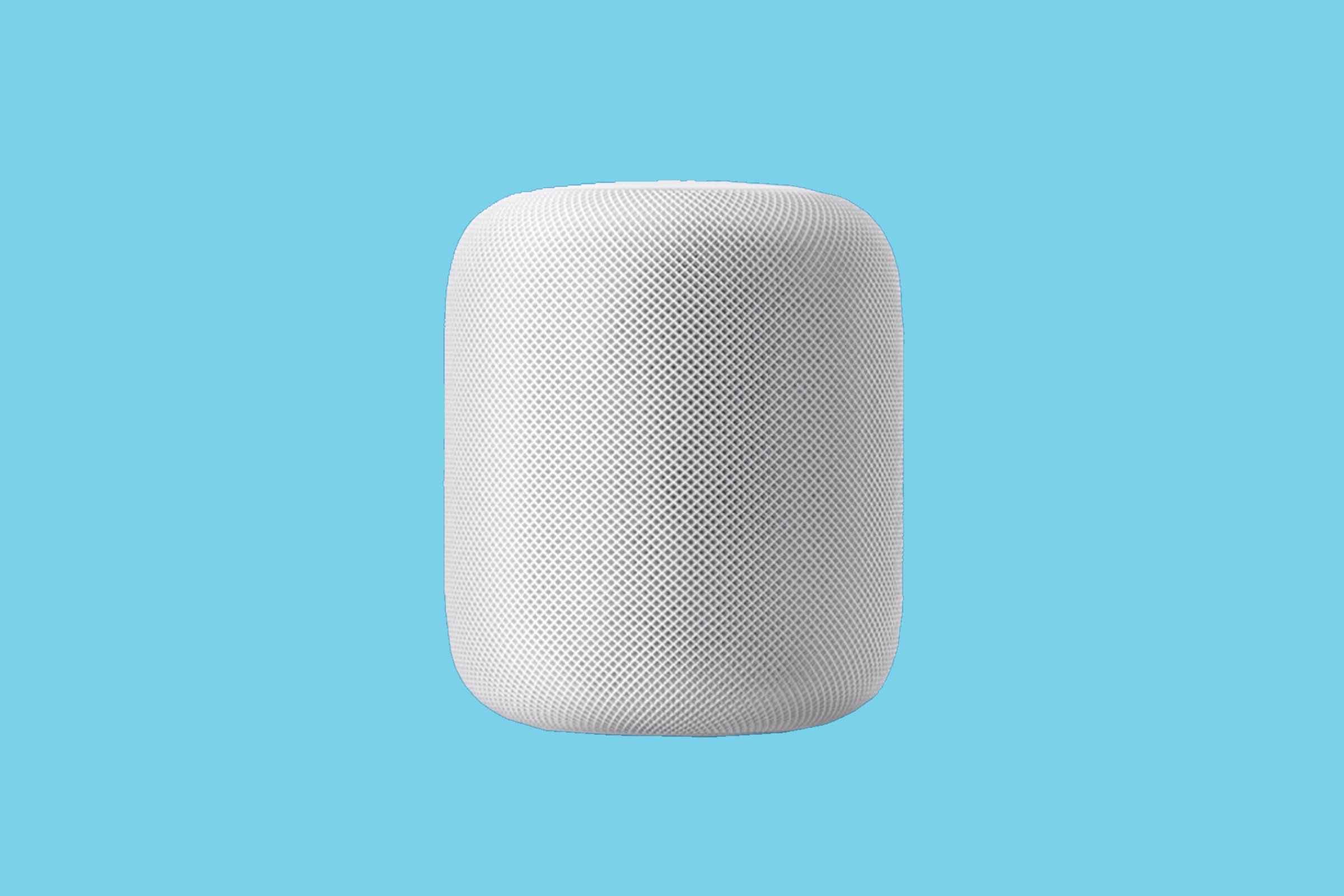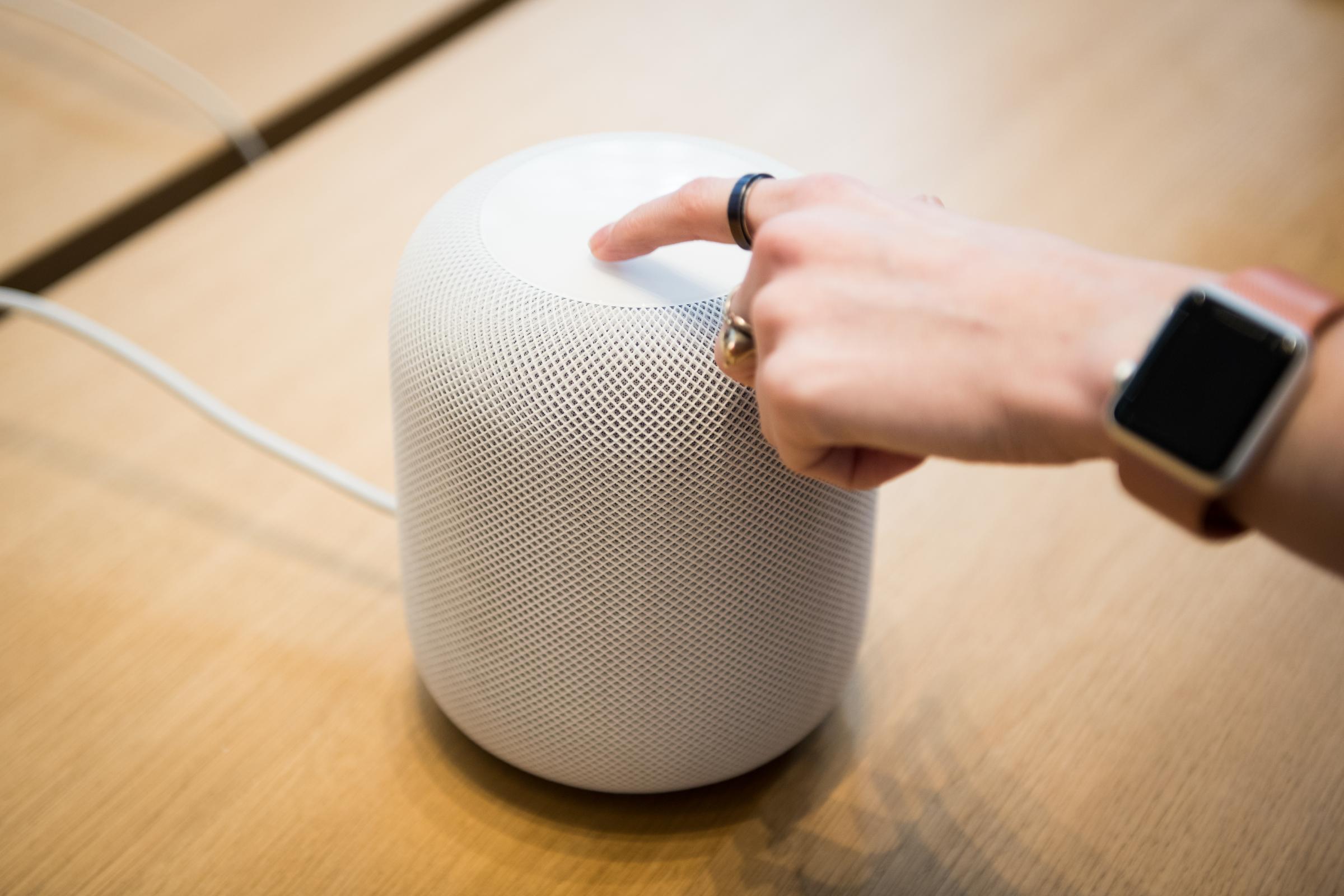
Apple may have gotten a head start on virtual assistants when Siri arrived on the iPhone 4s back in 2011. But rivals Amazon and Google have a big lead when it comes to smart assistants for your home, thanks to their Amazon Echo and Google Home devices.
Not to be left out, Apple is entering the voice-activated home assistant arena with the HomePod, a Siri-enabled smart speaker that’s available now for $349. Apple is hoping to make the HomePod stand out by positioning it as high-end audio gear with artificial intelligence, rather than a simple home assistant. The HomePod largely succeeds in that regard, but it’s not without a few drawbacks.
Here’s what it’s been like to spend a month with the Apple HomePod.
Siri is a pretty good DJ
One of my favorite aspects of the HomePod was the way Siri was able to better understand my music preferences over time. Whenever I issued a command like, “Hey Siri, play some music I would like,” roughly three out of four times it would come back with a track by an artist new to me that I enjoyed. Only once did I have to ask three times before Siri pulled up a song I actually liked. Apple’s virtual assistant was also pretty good at selecting tracks from individual artist catalogues, which proved to be helpful for discovering new music.
Siri’s music choices are rooted in several factors, including Apple’s own algorithms (which have been influenced by human editors) and the music you choose to listen to in Apple Music across all of your devices — meaning the experience will likely vary for everyone. That should make using Siri’s DJ capabilities different than just listening to your tunes on shuffle. Apple focuses on breaking down an artists’ library into three different stages: the essentials, which includes an artist’s biggest blockbusters, their secondary hits, and finally the deep cuts, or songs that only super fans would likely know.
Siri generally provided a mix of hit songs and deep cuts whether I asked for music by artists that I already love or bands that I like but don’t follow very closely. But on one occasion, I was slightly disappointed when Siri played mostly well-known tracks from only one of five albums from a band I’m deeply familiar with.
That being said, the Google Assistant was skilled at curating music on the Google Home Max, too. Once I linked the speaker to my Google Play Music account, the Google Assistant began to play alternative and classic rock tunes that matched my listening habits. Siri generally felt more competent in this area, however, since the HomePod’s picks were usually more diverse across genres, whereas Google was mostly fixated on rock. Things may differ if you have a paid subscription to Google Play Music; I was only using the free version. A command like “Play some songs I would like,” also works on the Google Home if you’re using Spotify as your default music player, but in my experience that request worked much better when using Google Play Music.
Read more: Apple’s HomePod Faces a Challenge the Company Is Totally Unfamiliar With

Siri is still way more useful on your phone
Siri’s functionality on the HomePod is limited compared to AI assistants on rival devices. Apple’s virtual helper accomplishes basic tasks well, such as fetching weather forecasts and offering suggestions for nearby restaurants and shops. But it falls short in many other areas that Google and Amazon have thoroughly covered.
Siri can’t recall information from your calendar, pull up recipes, or set multiple timers at once. It’s also not as good at answering general knowledge questions, particularly if you’re asking for help with a common issue. When I asked Siri, “What’s the best way to clean a flat screen TV?,” it came up empty. Both Google and Amazon were able to at least suggest that I use a soft cloth or microfiber cloth.
Outside of music curation, Siri is far better on your iPhone than on the HomePod. It’s capable of a range of time-saving tasks on your phone, such as canceling multiple alarms at once, searching through your giant photo library to pull up that vacation photo from three years ago, finding your calendar appointments, and suggesting apps you may want to use. But Siri did manage to retain its humor when moving to the HomePod — if you ask a question like “What does Siri mean?” or “Are you a robot?” it’ll come back with a cheeky answer just like it would on your phone.
That Siri is more useful on the iPhone isn’t shocking when you consider it was created for smartphones in the first place. Amazon’s virtual helper — and even the Google Assistant (although it’s long been available on smartphones) — were developed with hands-free, voice-first products like the Echo and Google Home in mind.
Read more: Google’s Tiny New Camera Uses AI to Become Your Personal Photographer

It’s all about the sound
The HomePod is a music machine first and foremost, and that becomes immediately evident when listening to it alongside other smart speakers. Music sounded generally richer and more open on the HomePod compared to cheaper alternatives like the second-generation Amazon Echo or even the Echo Show, both of which sounded shallow alongside Apple’s speaker. The difference is harder to discern when comparing the HomePod against other premium speakers, like the Google Home Max and Sonos One, both of which also sound fantastic.
But there was one characteristic that seemed consistent no matter which device I listened to alongside the HomePod. Specific instruments were much more audible on the HomePod, making it easier to hear the individual layers of a song. While speakers like the Google Home Max and Sonos One were also better at isolating and highlighting specific elements of a song compared to their cheaper counterparts, the HomePod did a slightly better job at this.
Ultimately, the decision to purchase Apple’s HomePod should come down to whether you’re willing to spend considerably more money for great sound but inferior voice controls compared to an Amazon Echo or Google Home device. (There’s also a chance Siri could be improved with software updates down the road.) Plus, you’ll have to commit to Apple Music to get the most out of the HomePod, since other services like Spotify are only compatible via AirPlay.
As an alternative, it may be worth considering the Alexa-powered Sonos One, which also offers higher quality audio than the standard Echo, and costs $199 for one speaker and $350 for two. Still, the HomePod is a classic example of Apple focusing on doing one thing well rather than succeed at everything at once. The question is whether or not that will be enough to make the HomePod a hit.
Buy now: Apple HomePod, $349, Apple
More Must-Reads from TIME
- Cybersecurity Experts Are Sounding the Alarm on DOGE
- Meet the 2025 Women of the Year
- The Harsh Truth About Disability Inclusion
- Why Do More Young Adults Have Cancer?
- Colman Domingo Leads With Radical Love
- How to Get Better at Doing Things Alone
- Michelle Zauner Stares Down the Darkness
Contact us at letters@time.com